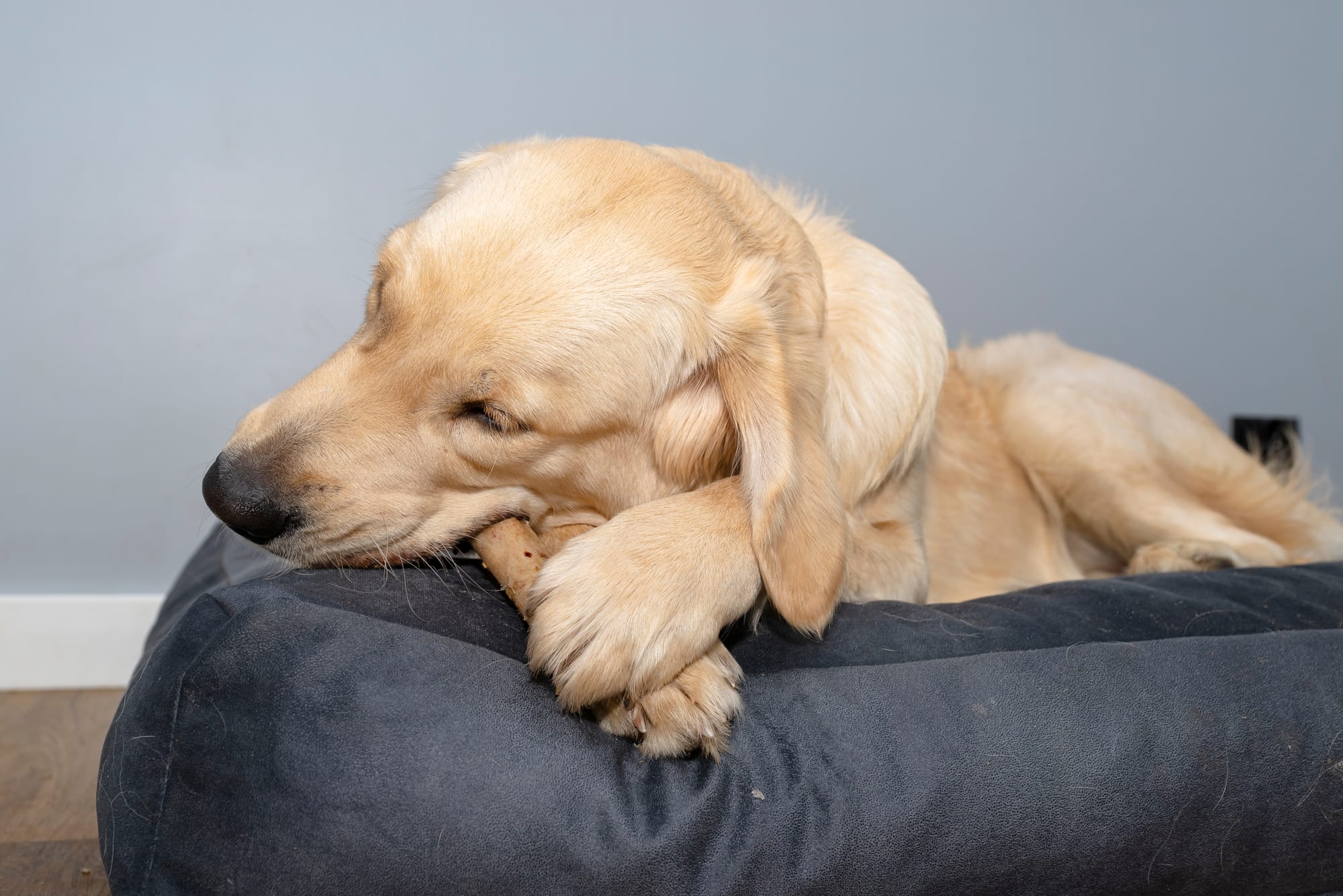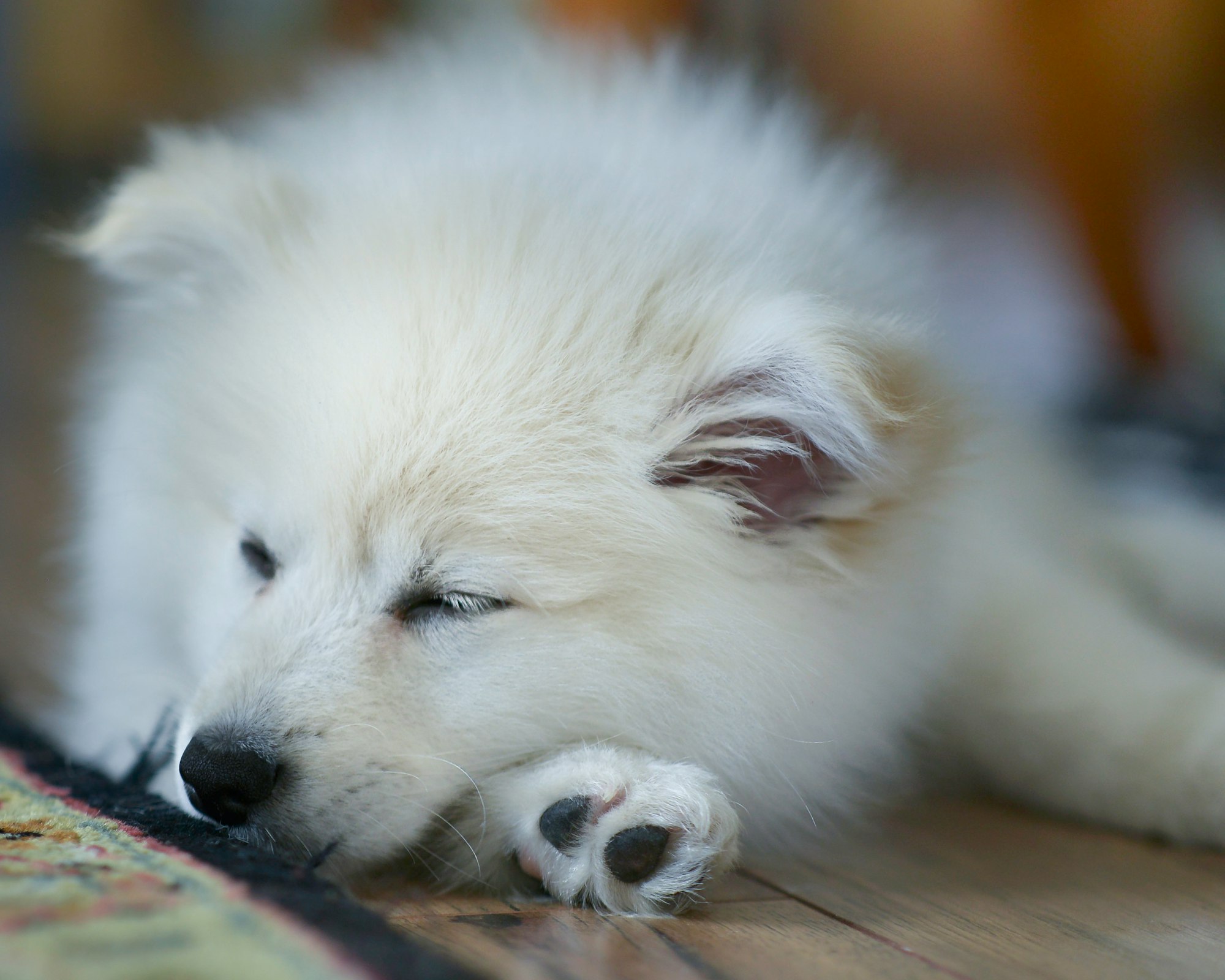You take your puppy to the vet, feed them nutritious food, and make sure they have everything they need to be cozy and comfortable at home. Yet, have you given much thought to their oral hygiene routine?
Like humans, dogs need to keep their teeth and gums clean and healthy. Oral care is directly linked to overall well-being, and starting early can help you keep pesky plaque and bacteria at bay.
Not sure where to start? Today, we’re sharing everything you need to know about how to care for puppy teeth, one step at a time!
When to Start Brushing Your Puppy’s Teeth?
If you’re a pet parent, it’s best to wait until all of your puppy’s adult teeth come in before you start brushing them. This should usually occur when they’re around four to six months old. By starting early, you can help establish strong and healthy habits that will last a lifetime! It also helps prevent any sensitivity that your dog might feel if they’ve gone a long time without getting their teeth cleaned.
To make it easier to stick with the habit, try to brush their teeth at the same time each day, such as right before bedtime. You can even repeat a simple phrase, such as “Brush!” so they know what to expect.
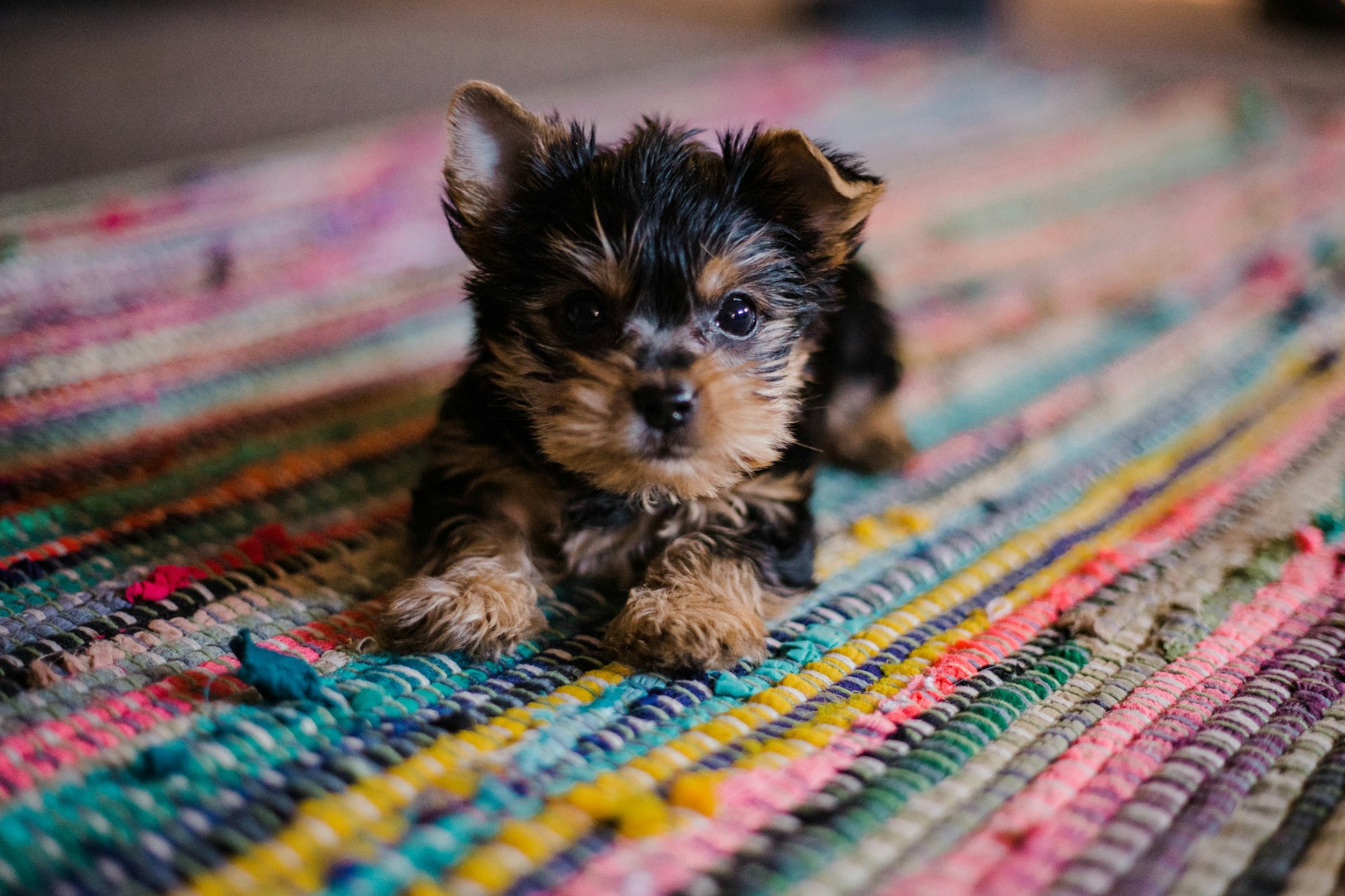
Why Is It Important to Clean Your Puppy’s Teeth?
You have a lot on your plate with a new puppy. Why should you worry about their dental health? This step is more important than you might think, and here’s why.
If you allow plaque to remain on your puppy’s teeth for an extended period of time, it can begin to damage their dental health. The good news is that most dogs don’t eat the sugary or acidic foods that lead to bacterial build-up on their enamel, so cavities aren’t as common. However, untreated plaque can hurt their teeth and gums.
According to research, at least 80% of dogs over the age of three suffer from periodontal disease, which causes their gums to become red, swollen, painful, and inflamed. This can affect their quality of life and make it difficult to eat. Severe cases of periodontal disease can lead to tooth infections or even tooth loss.
By gently brushing that plaque away every day, you can help keep your puppy’s mouth healthy and happy. When plaque hardens and becomes yellow, it turns into tartar. Then, the only way to effectively remove it is via a mechanical cleaning. It’s much easier and more economical to address the issue before it occurs.
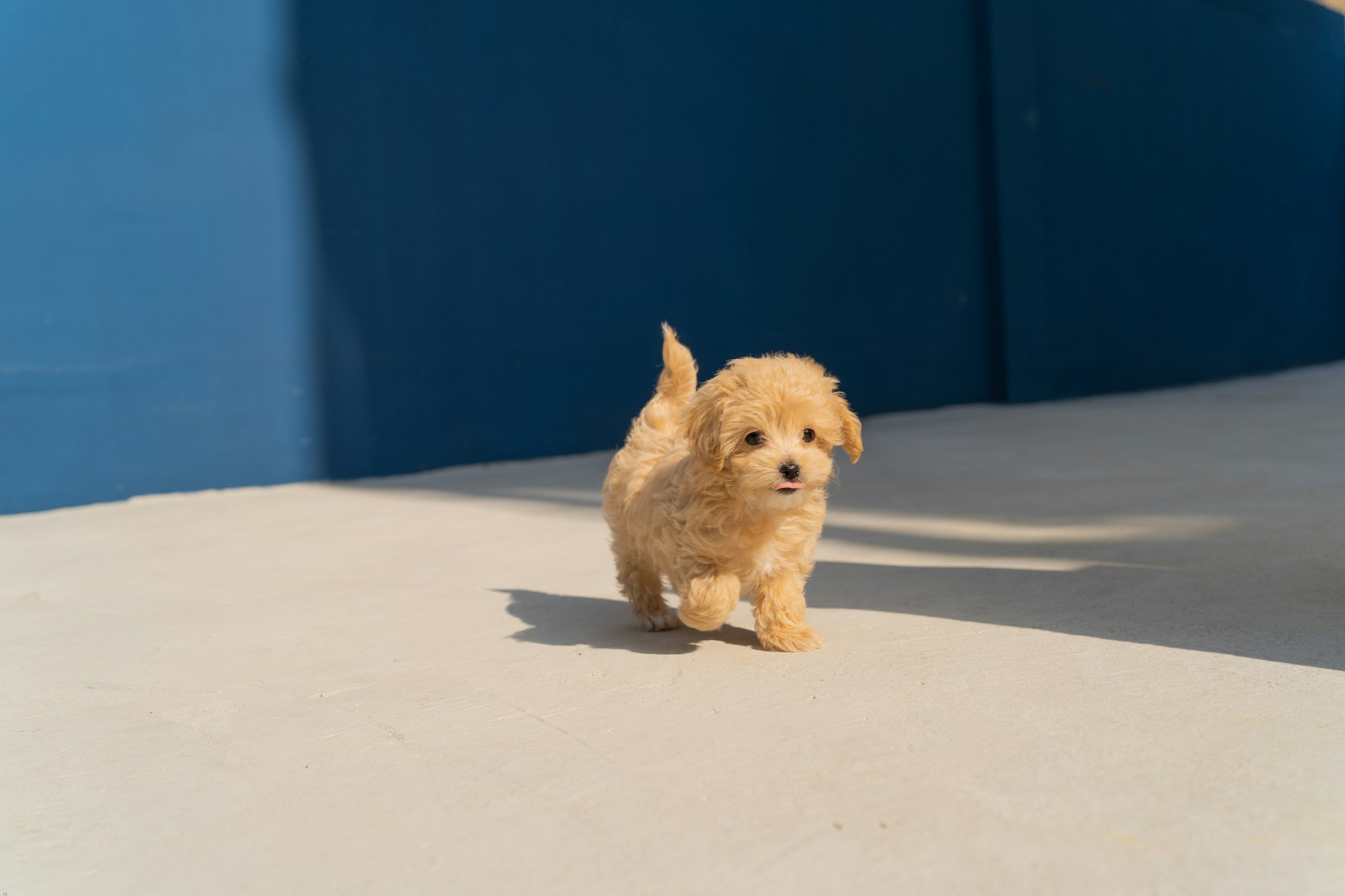
Identifying Signs of Dental Distress in Your Puppy
Your puppy can’t tell you when its teeth or gums hurt. However, there are telltale signs that they’re suffering from some form of dental decay or disease. Some of the most common symptoms to look out for include:
- Bad breath
- Bleeding gums
- Discolored enamel
- Difficulty chewing
- Frequent drooling
- Weight loss
- Blood in saliva or on toys
- Swelling or discharge below the eye
If you notice any of these signs in your pup, make sure to visit your veterinarian immediately. They can recommend the best course of treatment, though it’s always best to take a more proactive approach.
Knowing this, how can you take charge of your puppy’s dental health? Let’s take a look at how to clean their teeth and keep them that way.
How to Clean Puppy Teeth: Techniques to Follow
There are a few different ways you can keep your puppy’s teeth clean. By trying these techniques, you can determine what works and what doesn’t. Before long, you’ll find an approach that’s easy and enjoyable for everyone.
Use a Toothbrush and Toothpaste
Most pups prefer to have their teeth brushed just like you do -- with a toothbrush and toothpaste! Of course, you’ll need to use equipment that’s made especially for dogs, never human gear. Not only does human toothpaste contain ingredients that could harm your pup, but the angle on a human toothbrush isn’t designed to fit comfortably or safely in their mouth.
You can find doggie toothbrushes in a few different sizes and styles, including traditionally-shaped ones with handles, as well as smaller ones that fit on your finger.
While finger toothbrushes are common, they don’t adequately reach below your pup’s gumline, so it’s best to stick with a handle form. Most handles have a small brush on one end and a larger brush on the other end to accommodate any-sized breed.
You can also find a wide range of toothpaste flavors in tastes that dogs adore, such as peanut butter and cheese! If you find your pup doesn’t prefer a particular flavor, don’t get discouraged. Try a few different dog-specific options until you find one they can happily tolerate.
Use Dental Chews
While dental chews aren’t a full-time substitute for regular toothbrushing, they can help remove stubborn plaque and tartar from your pup’s teeth. You can find special treats and toys designed to gently scrub their teeth, which can also relieve pressure and inflammation in their gums.
Schedule Regular Check-Ups
Just like their humans, puppies need regular check-ups to make sure everything is in great working order. In addition to assessing their overall health, your veterinarian can also check your dog’s oral health! They can check for problems, recommend preventative treatments, and even complete an annual cleaning if one is required.
Incorporate Vitamins for Dental Health
Regular brushing can keep your puppy’s teeth in great shape, but if you’re looking to give them a little boost, you can also add vitamins designed to enhance bone support. While these supplements won’t outright prevent dental disease, they can be a smart addition to your pet’s routine. Remember to always check with your veterinarian before making any type of changes to your pet’s diet.
Hire a Groomer
As your pet’s parent, you’re chiefly responsible for maintaining every aspect of their health. However, if you find that taking care of their dental care needs is too much for you to handle, you may want to consider outsourcing that task to a trusted local groomer.
These professionals have the tools, knowledge, and expertise required to successfully and thoroughly clean your pup’s teeth. You can set up a grooming schedule for your pet so you can rest assured they’re staying on track.
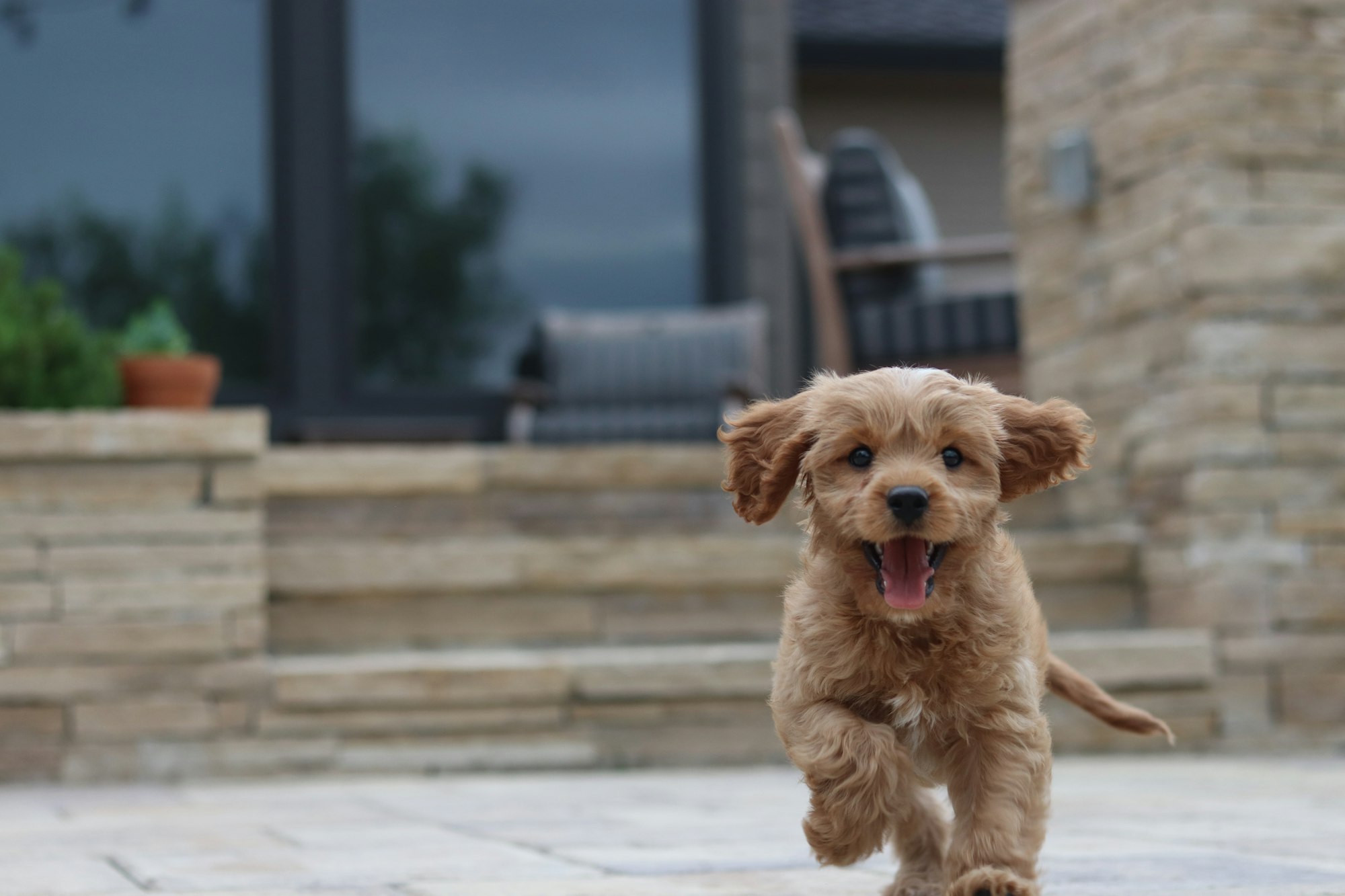
The Necessary Gear to Gather
Before you begin to brush your pet’s teeth, it’s important to have the right gear in place. Here’s a comprehensive list of everything you need:
- Puppy toothbrush
- Vet-approved canine toothpaste
- Dental chew
- Tooth-friendly treats
How to Brush Your Puppy’s Teeth: A Step-by-Step Guide
Now that you have everything in place, are you ready to get started? Here are the steps to follow to brush your puppy’s teeth.
Step 1: Choose the Right Time and Place
It’s easiest to brush your pup’s teeth when they’re not in a fussy or overly playful mood. Most parents find that they’re the most docile in the early morning or around bedtime.
Choose a spot where your dog can sit or lie in a comfortable position, and keep the location consistent. If your dog is a small breed or has a short nose, it might be most comfortable lying on a soft surface.
Step 2: Gather Your Equipment
Once your pup is in position, you shouldn’t need to get up and grab extra gear. Before you settle in to start, make sure you have everything you need in place and easily within reach.
Step 3: Start Slow
Especially in those first few days, take the process nice and slow. Talk soothingly to your pet as you stroke their head and muzzle. Use a relaxed voice so they feel safe and make sure they’re comfortable before moving on to the next step.
Step 4: Introduce the Toothpaste
Don’t simply squeeze the toothpaste onto the brush and start scrubbing away. Your pup needs time to get used to the flavor, texture, and consistency of the paste, first.
Squeeze a small amount on your finger and let them lick it. Then, give them plenty of praise, along with a healthy dental treat.
Next, add a little more toothpaste to your finger and apply it directly to their tooth. If they complete that step successfully, you can make the reward a little bigger! Take them for a quick ride in the car or go on a walk, and offer another healthy treat.
Once they’ve grown accustomed to the toothpaste, you can begin brushing their teeth regularly.
Step 5: Brush Their Teeth With the Toothbrush
Start by squeezing a pea-sized amount of doggie toothpaste onto the toothbrush. Starting on one side, lift back their upper lip and gently brush around each tooth and along the gumline.
You may also find it easier to keep their mouth closed, placing the toothbrush under their lip and brushing by feeling instead. Brush each tooth in a circular motion for a few seconds before moving to the next. It’s especially important to clean the upper rear teeth, as these tend to collect the most plaque.
Step 6: Create (and Stick to) a Routine
In the very beginning, you may only be able to brush one or two teeth before your pup begins to squirm. That’s OK! Reward their effort with a fun outing or a healthy treat, and try again the next day.
Remember to go slowly and give plenty of treats and rewards along the way. In time, your puppy will begin to associate the toothbrushing routine with a fun and enjoyable experience, and it will get easier.
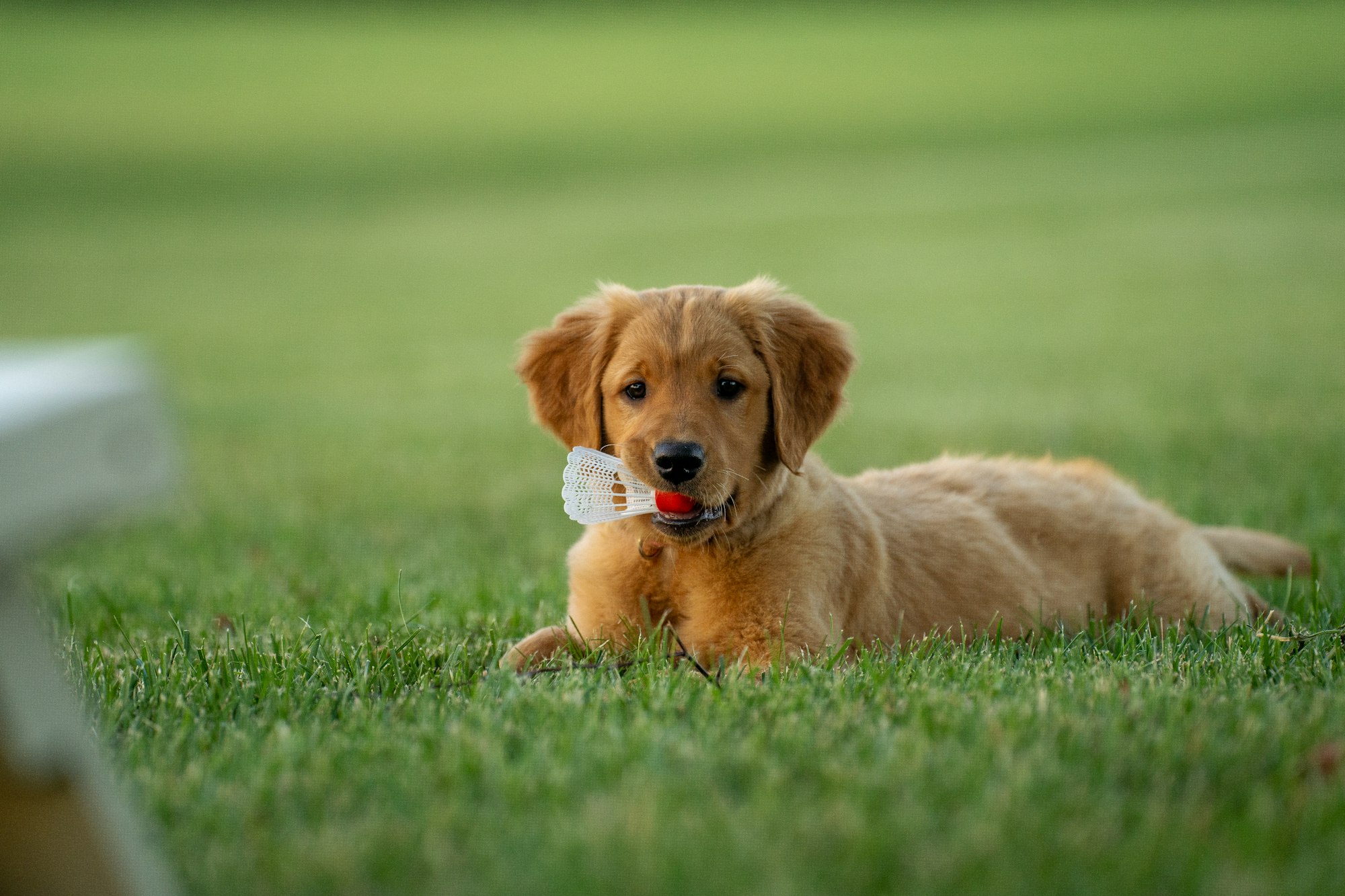
Take Charge of Your Dog’s Dental Health
As a responsible pet owner, you know that your pup’s oral hygiene is critically important. By keeping their teeth and gums strong and healthy, you’re reducing their risk of experiencing a dangerous dental disease and improving their overall quality of life.
This routine doesn’t have to be intimidating. With the right tools and approach, you’ll have everything you need to brush your puppy’s teeth with confidence! They’ll reward you with a lifetime of love, happiness, and boundless gratitude, so it’s a win-win for everyone.
For additional pet-parenting tips, head over to TryFi.com's Off Leash blog.
And don't forget to check out TryFi's innovative Fi Dog Collar, which offers GPS tracking, activity monitoring, and escape alerts to keep your furry friend safe. Try the Fi Dog Collar today!
